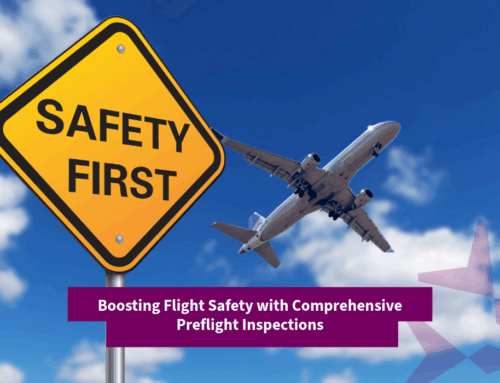The Environmental Impact of Aviation and How Flight Support Services Are Adapting
The aviation industry plays a vital role in global connectivity and economic growth, but it is also a significant contributor to environmental challenges. From greenhouse gas emissions to noise pollution, aviation’s environmental impact has drawn increasing scrutiny. In response, flight support services are stepping up to mitigate these effects by adopting innovative solutions and sustainable practices. Here’s a closer look at the environmental impact of aviation and how flight support services are evolving to address it.
The Environmental Impact of Aviation
- Greenhouse Gas Emissions
Aviation accounts for approximately 2-3% of global carbon dioxide (CO₂) emissions. Jet engines burn fossil fuels, producing CO₂, nitrogen oxides (NOx), and water vapor, all of which contribute to climate change. - Noise Pollution
Aircraft operations generate significant noise, particularly during takeoff and landing, which affects communities near airports. - Resource Consumption
The aviation industry consumes vast amounts of fossil fuels and water, with additional resource demands for airport infrastructure, maintenance, and operations. - Non-CO₂ Effects
High-altitude emissions of water vapor and NOx contribute to the formation of contrails and ozone, amplifying aviation’s impact on the environment. - Waste Generation
Airports and airlines produce considerable waste, including single-use plastics, discarded food, and packaging from in-flight services.
How Flight Support Services Are Adapting
Flight support services are at the forefront of sustainable initiatives in the aviation industry, implementing strategies to minimize environmental impact.
1. Promoting Fuel Efficiency
- Optimized Flight Planning: By leveraging advanced software, flight support services design routes that reduce fuel consumption and emissions.
- Efficient Ground Operations: Services like single-engine taxiing and reduced auxiliary power unit (APU) use during ground handling minimize unnecessary fuel burn.
2. Adoption of Sustainable Aviation Fuels (SAF)
- Many ground handling and flight support companies are facilitating the adoption of SAF, which can reduce lifecycle CO₂ emissions by up to 80%.
- Partnerships with fuel suppliers ensure SAF availability at major airports, helping airlines transition to cleaner energy sources.
3. Implementing Renewable Energy
- Ground operations are increasingly powered by renewable energy sources such as solar panels installed at hangars and airport facilities.
- Electric Ground Support Equipment (eGSE), like battery-powered tugs and carts, replaces traditional diesel-powered machinery.
4. Enhancing Waste Management
- Flight support services collaborate with airports to implement robust recycling programs for waste generated during flights and ground operations.
- Composting organic waste from in-flight meals reduces landfill contributions.
5. Supporting Carbon Offset Programs
- Many flight support providers offer carbon offset solutions for airlines and private jet operators, enabling them to balance emissions by funding reforestation and renewable energy projects.
6. Noise Reduction Measures
- Advanced routing systems and collaboration with air traffic control minimize noise by optimizing flight paths and descent procedures.
- Noise insulation and mitigation programs benefit communities around airports.
7. Water and Resource Conservation
- Ground handling teams use water-efficient cleaning systems for aircraft and equipment to reduce water wastage.
- Sustainable construction practices for airport infrastructure prioritize resource efficiency.
8. Promoting Green Certifications
- Many flight support services seek certifications such as ISO 14001 (Environmental Management) to demonstrate commitment to sustainability.
- Environmental audits and benchmarks are used to track progress and improve sustainability practices.
Technological Innovations Driving Sustainability
Flight support services are embracing cutting-edge technology to reduce aviation’s environmental footprint:
- AI-Powered Route Optimization: Artificial intelligence analyzes weather patterns and air traffic to create fuel-efficient flight plans.
- Electric and Hybrid Aircraft: While still in early development, these aircraft types represent a significant step forward in reducing emissions.
- Digital Documentation: Paperless systems for flight plans and operations reduce paper waste and improve operational efficiency.
Challenges in Adopting Sustainable Practices
Despite progress, several challenges hinder the widespread adoption of sustainable practices in aviation:
- High Costs: Transitioning to SAF and renewable energy requires significant investment.
- Limited SAF Supply: The availability of sustainable fuels is still limited, particularly at smaller airports.
- Technological Barriers: Advanced technologies like electric aircraft are still years away from mainstream adoption.







